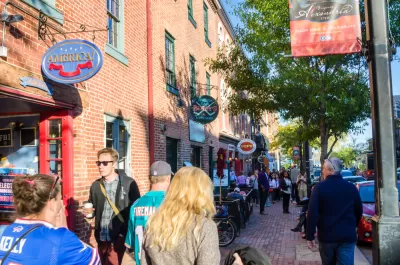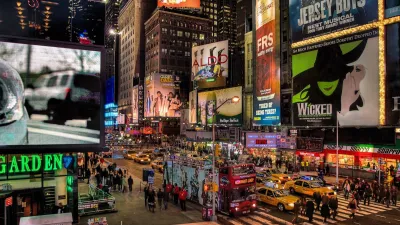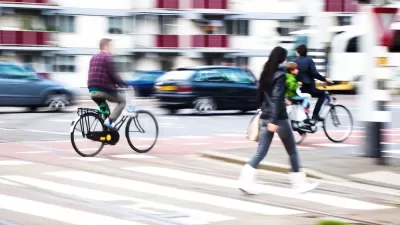What does a '15-minute city' truly mean–and how achievable is it in the U.S.?

Alan Ehrenhalt explores the complications of the popular "15-minute city" concept, asking "[w]hat exactly makes a 15-minute city, anyway? And is it a new idea or just a slogan that has been grafted onto some urbanist schemes that have been floating around for many years?"
The crux of "15-minute city" discussions is "the simple idea that we should be able to buy or do just about anything we want by walking 15 minutes or less." This mile-long walk, argues Ehrenhalt, may actually be unattractive to many Americans. "That’s why some critics have said that if we are talking exclusively about walking, the idea of a five- or 10-minute city might be more realistic. It will also be much more difficult to achieve, to say the least." When it comes to biking, Ehrenhalt worries that "the number of bike lanes required to create a central element of the redesigned city are far more than we have built anywhere so far, even in the most progressive cities."
Ehrenhalt poses similar questions about transit: "what does 15-minute transit really mean? If you’re talking about door to door, there really aren’t many transit trips that can be completed in 15 minutes. If you’re talking about a bus or train station within 15 minutes of home, it’s something we clearly ought to work toward, but it doesn’t suggest brief and convenient trips."
While laudable, the goal of truly creating 15-minute cities and neighborhoods in many U.S. cities, Ehrenhalt writes, is "[n]ot impossible, but very difficult."
FULL STORY: The Elusive Dream of the 15-Minute City

Planetizen Federal Action Tracker
A weekly monitor of how Trump’s orders and actions are impacting planners and planning in America.

San Francisco's School District Spent $105M To Build Affordable Housing for Teachers — And That's Just the Beginning
SFUSD joins a growing list of school districts using their land holdings to address housing affordability challenges faced by their own employees.

The Tiny, Adorable $7,000 Car Turning Japan Onto EVs
The single seat Mibot charges from a regular plug as quickly as an iPad, and is about half the price of an average EV.

Seattle's Plan for Adopting Driverless Cars
Equity, safety, accessibility and affordability are front of mind as the city prepares for robotaxis and other autonomous vehicles.

As Trump Phases Out FEMA, Is It Time to Flee the Floodplains?
With less federal funding available for disaster relief efforts, the need to relocate at-risk communities is more urgent than ever.

With Protected Lanes, 460% More People Commute by Bike
For those needing more ammo, more data proving what we already knew is here.
Urban Design for Planners 1: Software Tools
This six-course series explores essential urban design concepts using open source software and equips planners with the tools they need to participate fully in the urban design process.
Planning for Universal Design
Learn the tools for implementing Universal Design in planning regulations.
Smith Gee Studio
City of Charlotte
City of Camden Redevelopment Agency
City of Astoria
Transportation Research & Education Center (TREC) at Portland State University
US High Speed Rail Association
City of Camden Redevelopment Agency
Municipality of Princeton (NJ)





























